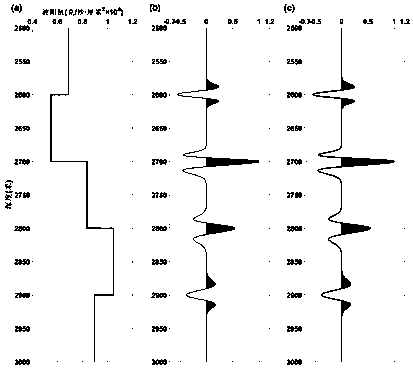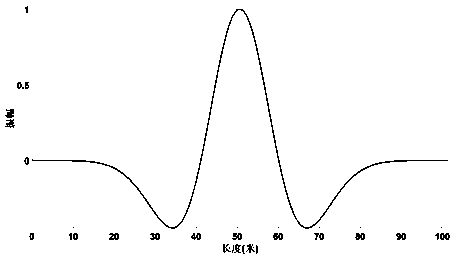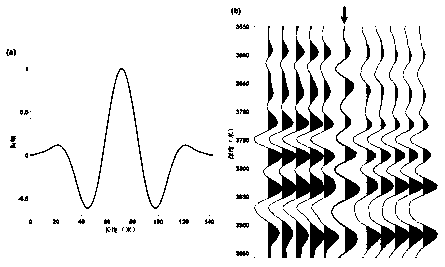Depth-domain seismic wavelet extraction and seismic record synthesis integrated method
A depth-domain wavelet and seismic wavelet technology, applied in seismology, seismic signal processing, seismology for well logging records, etc., can solve the problem of increased calculation time, lack of high-frequency information in seismic records, and reflectivity leakage. mining and other issues
- Summary
- Abstract
- Description
- Claims
- Application Information
AI Technical Summary
Problems solved by technology
Method used
Image
Examples
Embodiment Construction
[0059] (1) Calculate reflection coefficient based on logging data, the specific formula is:
[0060]
[0061] Where r i Is the depth-domain reflection coefficient between the i-th sampling point and the i+1-th sampling point, ρ i Is the density of the i-th sampling point, v i Is the speed of the i-th sampling point.
[0062] (2) Select a suitable seismic trace beside the well from the depth migration seismic data, and select a constant velocity v c , And taking this constant velocity as the standard velocity, according to the following formula, transform the velocity and depth of the seismic trace beside the well in the depth domain to satisfy the linear time-invariant condition:
[0063]
[0064] Where Δd is the depth sampling interval of logging data, v c Is the given constant speed, v max Is the maximum speed recorded in the logging speed data, Δd c It is the depth sampling interval after constant speed conversion. At the transformed sampling interval d c Resample the seismic trac...
PUM
 Login to View More
Login to View More Abstract
Description
Claims
Application Information
 Login to View More
Login to View More - R&D
- Intellectual Property
- Life Sciences
- Materials
- Tech Scout
- Unparalleled Data Quality
- Higher Quality Content
- 60% Fewer Hallucinations
Browse by: Latest US Patents, China's latest patents, Technical Efficacy Thesaurus, Application Domain, Technology Topic, Popular Technical Reports.
© 2025 PatSnap. All rights reserved.Legal|Privacy policy|Modern Slavery Act Transparency Statement|Sitemap|About US| Contact US: help@patsnap.com



